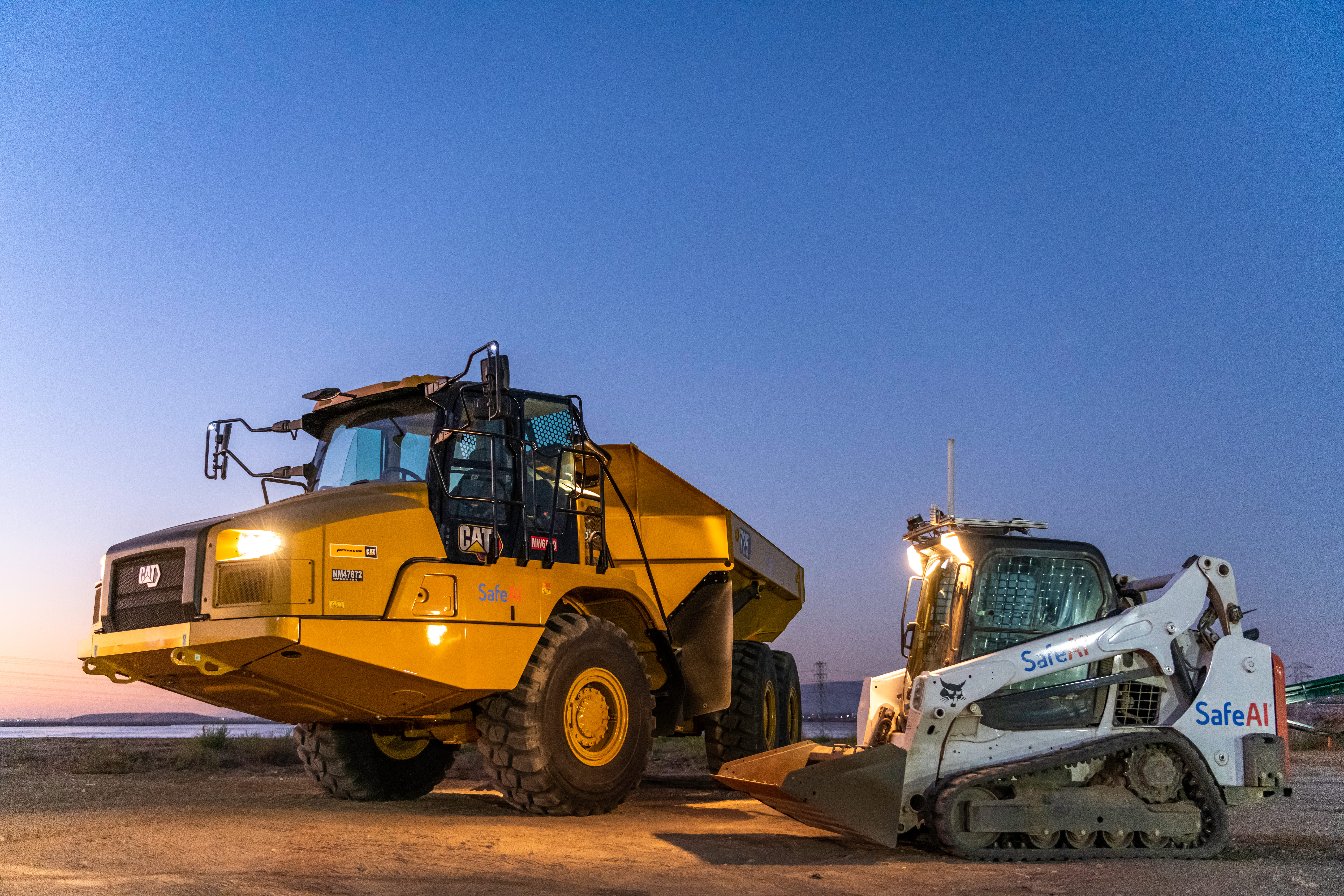Why driverless tech works for mining and construction but robotaxis aren’t ready, according to SafeAI CEO

Bibhrajit Halder, founder and CEO of SafeAI
Courtesy: SafeAI
Despite the ambitions of Waymo, Cruise, Tesla and others, robotaxis have yet to revolutionize transportation in the U.S., and remain in a state of perpetual technical development. Meanwhile, autonomous vehicles are already at work full-time in heavy industries like mining and construction.
That’s one reason SafeAI founder and CEO Bibhrajit Halder left his autonomous passenger vehicle work behind. The start-up retrofits vehicles and equipment that are already popular in heavy industries — including haul or dump trucks, dozers, and skid steers — with its autonomous systems.
Halder previously worked on autonomous software and systems at Ford, Faraday Future and Apple following a long tenure with heavy equipment maker Caterpillar, where he worked on their pioneering autonomous mining truck.
The CEO explained that operating a taxi is a different and less profitable job than operating equipment that can move materials around a mine, quarry, or to build dams or other infrastructure.
Transporting passengers around public roadways requires vehicles that can cope with a mix of good and bad drivers, pedestrians, complex rules of the road and other challenges. Moving materials and equipment, at site-specific lower speeds and in constrained environments where only licensed professionals are allowed on-site, is not simple — but it’s simpler than passenger transport.
Owners of vehicles used in mining and construction are also willing to pay for state-of-the-art systems as long as they increase the safety and productivity of their fleets. Most taxi, limo or rideshare businesses can’t afford fleets of sophisticated automated vehicles at today’s costs.
At the same time, builders and miners have already made significant investments in heavy equipment.
Some of the vehicles used to haul tons of materials around job sites can cost more than $1 million up front, plus hundreds of thousands of dollars a year in operational costs such as labor, fuel, service and maintenance, Halder says.
That’s one reason why SafeAI focused on retrofitting existing vehicles rather than building new ones. The four-year-old company developed its autonomous systems using off-the-shelf components including cameras, microprocessors and lidar sensors, then wrote its own machine learning software. In a haul truck, this helps builders and miners manage a load-haul-dump cycle without any human intervention.
Workers still have to load dirt onto the truck, but the SafeAI-equipped vehicle can understand how much weight is in its bed, and when it reaches capacity the carry the dirt to a precise location and dump it automatically.
SafeAI retrofits vehicles for use in heavy industries to make them autonomous.
Courtesy: SafeAI
A skid-steer with the SafeAI system can pick up and carry dirt, snow or waste in a similar manner.
Halder says, “Since this is all on private land, there’s no federal mandate that would prevent use of autonomous systems. So we do not have any regulatory hurdles. Instead, we focus on all the safety standards.”
He notes that Caterpillar’s autonomous vehicles have moved more than 3 billion tons of material without a single accident, which has helped the industry have faith in autonomous technology.
$21 million Series A
Headquartered in Milpitas, California, with offices in Perth, Australia, and Tokyo, SafeAI just raised $21 million in a Series A round of venture funding led by Builders VC, a San Francisco firm focused on tech that modernizes antiquated industries. Industry players including Japanese construction giants Obayashi, Australian mining firm Maca and Indian conglomerate Vimson Group are also backing Safe AI along with other venture investors.
Builders general partner Mark Blackwell told CNBC his firm backed SafeAI in part because of its founder’s impressive background, and the market’s readiness to embrace more autonomous vehicles. But he also said he has hope SafeAI can make the work of mining and building more environmentally sound, and safer.
“The pain points are acute in mining. The industry represents 1% of the global workforce, but 8% of fatalities at work. When you run autonomously, you can operate more safely and reduce fuel, saving 7% per year per vehicle.”
SafeAI is focused on working within the constrained environments of mining and construction, and plans to use its funding to expand in Japan, Australia and the US. But Halder maintains a patiently optimistic outlook for driverless vehicles in transportation.
He said, “The technology is not quite there. But because of the amount of interest and funding in this– with tens of billions invested in to the world of driverless vehicles– it’s really moving along. We will get there. But I think we need to be patient. It took us 100 years to make cars as good as they are now.”